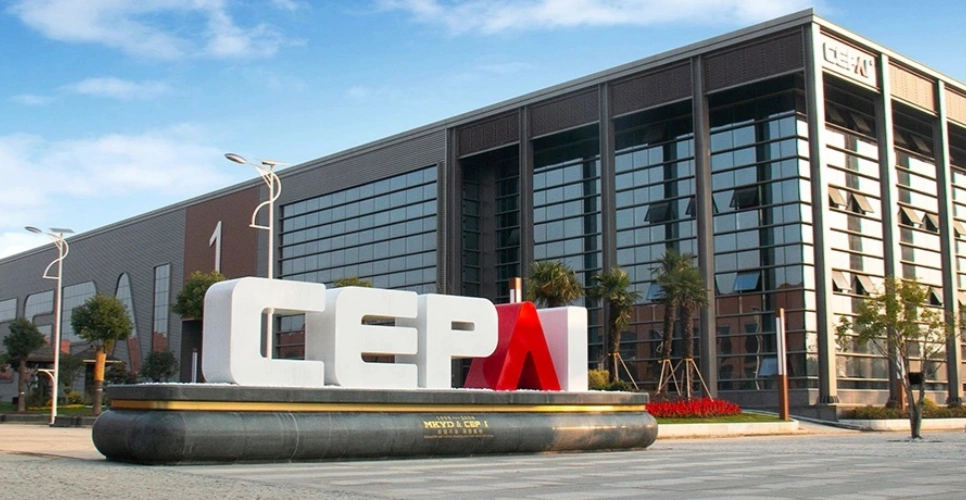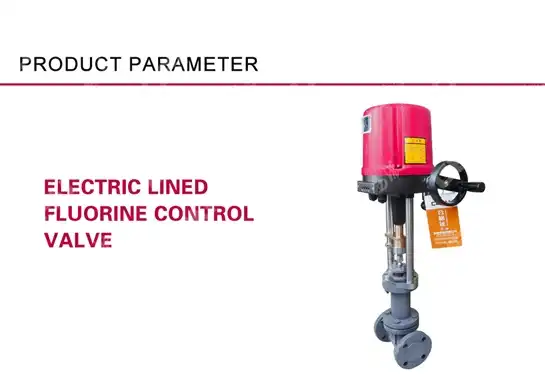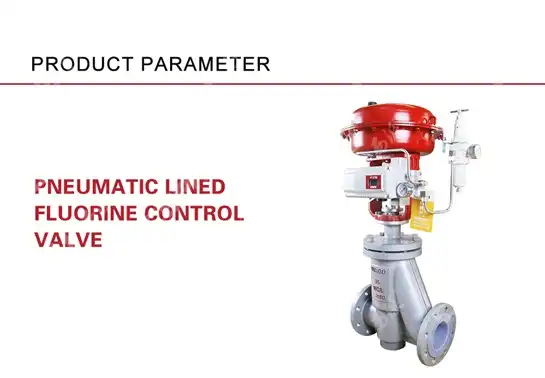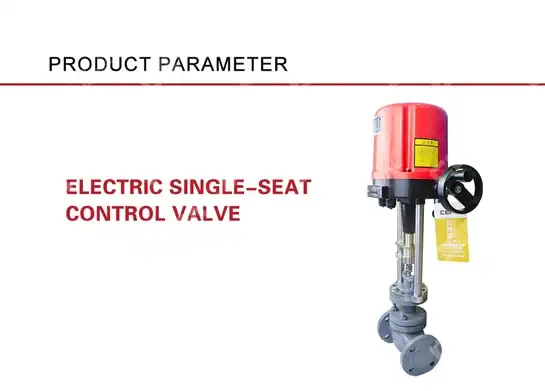High-Temperature Valves in Action: Case Studies from the Power Industry
When power plants face catastrophic failures due to valve malfunctions at extreme temperatures, the consequences extend far beyond equipment damage. Imagine a nuclear facility experiencing severe thermal shock, or a geothermal plant losing control of superheated steam flow – these scenarios highlight the critical importance of reliable High-Temperature Valve systems in power generation. This comprehensive analysis explores real-world case studies that demonstrate how advanced valve technologies safeguard power infrastructure while maintaining operational efficiency under the most demanding thermal conditions.
Critical Applications of High-Temperature Valves in Modern Power Systems
The power generation industry operates under some of the most extreme thermal conditions found in industrial applications. High-Temperature Valve technology serves as the backbone of these operations, ensuring safe and efficient control of superheated fluids across multiple power generation platforms. From coal-fired power plants operating steam systems at temperatures exceeding 600°C to nuclear facilities managing primary coolant circuits, these specialized valves must perform flawlessly under conditions that would destroy conventional equipment. Nuclear power systems present particularly challenging environments for High-Temperature Valve applications. The primary circuit loop operates under extreme pressure and temperature conditions, requiring valves that can handle rapid thermal transitions without compromising structural integrity. Recent studies have shown that fast pressure relief valves in nuclear applications must withstand thermal shock conditions where temperatures can fluctuate hundreds of degrees within seconds, demanding materials and designs that maintain reliability under such severe transient conditions. Geothermal power generation represents another critical application where High-Temperature Valve performance directly impacts operational success. These systems must manage naturally occurring superheated steam and corrosive geothermal fluids, often containing high concentrations of sulfur compounds and other aggressive chemicals. The unique challenges of geothermal applications require specialized valve designs that combine high-temperature resistance with exceptional corrosion protection, ensuring sustained performance in environments that would rapidly degrade standard valve materials.

-
Steam Turbine Integration and Control Systems
Steam turbine systems in power plants rely heavily on precise High-Temperature Valve control to optimize energy conversion efficiency. Main steam isolation valves, turbine bypass valves, and extraction steam control valves must operate reliably at temperatures often exceeding 500°C while maintaining precise flow control characteristics. These applications demand valve designs that can handle not only extreme temperatures but also rapid pressure changes and potential water hammer conditions that occur during turbine startup and shutdown sequences. The integration of High-Temperature Valve systems with modern digital control platforms has revolutionized power plant operations. Advanced actuator technologies, including electric actuators with 220V and 380V power ratings, provide precise positioning control with 4-20mADC signal feedback systems. This level of control precision enables power plants to optimize their thermal cycles, improving overall efficiency while reducing mechanical stress on critical components. Power plant desulfurization systems represent another demanding application for High-Temperature Valve technology. These systems must handle corrosive flue gas streams at elevated temperatures while maintaining environmental compliance standards. The combination of high temperature, corrosive media, and abrasive particulates creates an extremely challenging operating environment that requires specialized valve designs incorporating advanced materials and protective coatings.
Case Study Analysis: Nuclear Power Plant Emergency Systems
A detailed examination of fast pressure relief valve performance in nuclear power applications reveals the critical importance of thermal-fluid-structure coupling in High-Temperature Valve design. During severe accident scenarios, these valves must rapidly release superheated steam from primary circuit loops while withstanding extreme thermal shock conditions. The time-varying temperature profiles, combined with high mass flow rates and interior pressure fluctuations, create complex stress patterns that challenge conventional valve designs. Engineering analysis of nuclear emergency valve systems demonstrates the sophisticated design considerations required for High-Temperature Valve applications in critical safety systems. Three-dimensional thermal-fluid-structure coupling simulations reveal how rapid temperature changes induce thermal stress concentrations that can compromise valve integrity if not properly addressed in the design phase. These studies emphasize the importance of material selection, with specialized alloys including 316L stainless steel and high-performance Inconel variants proving essential for maintaining structural integrity under extreme conditions. The operational requirements for nuclear emergency valves extend beyond simple temperature resistance. These High-Temperature Valve systems must maintain leak-tight sealing performance while operating under transient thermal conditions that would cause most industrial valves to fail. Advanced sealing technologies, including flexible graphite packing systems and specialized PTFE compounds, have been developed specifically to address these challenging requirements while ensuring long-term reliability in safety-critical applications.
-
Material Science Innovations in Nuclear Applications
Recent advances in High-Temperature Valve materials have significantly improved performance in nuclear power applications. Pressure-balanced valve designs utilizing advanced metallurgy have demonstrated superior performance under thermal cycling conditions commonly encountered in nuclear power systems. The integration of 304 surfacing STL and 316 surfacing STL materials provides enhanced wear resistance while maintaining the high-temperature performance characteristics essential for nuclear applications. Manufacturing precision plays a crucial role in nuclear High-Temperature Valve performance. Modern production facilities, such as those operated by leading manufacturers, employ advanced machining technologies to achieve the tight tolerances required for nuclear-grade valve components. Computer-controlled manufacturing processes ensure consistent quality while meeting the stringent material traceability requirements mandated by nuclear regulatory authorities worldwide. Quality assurance protocols for nuclear High-Temperature Valve applications exceed those found in most industrial sectors. Comprehensive testing programs including hydrostatic pressure testing, thermal cycling validation, and seismic qualification ensure that these critical safety components will perform reliably throughout their operational lifetime. Advanced non-destructive testing techniques, including ultrasonic inspection and radiographic examination, verify internal component integrity before installation in nuclear power systems.
Geothermal Power Generation: Extreme Environment Valve Solutions
Geothermal power systems present unique challenges for High-Temperature Valve applications, combining extreme temperatures with highly corrosive operating environments. Natural geothermal fluids often contain aggressive chemicals including hydrogen sulfide, carbon dioxide, and various mineral compounds that can rapidly degrade conventional valve materials. Successful High-Temperature Valve designs for geothermal applications must address both thermal performance requirements and exceptional corrosion resistance demands. Field studies from geothermal installations worldwide demonstrate the critical importance of proper High-Temperature Valve selection in these demanding applications. Wells producing superheated steam at temperatures exceeding 300°C require specialized wellhead valves capable of withstanding not only extreme temperatures but also the abrasive effects of entrained particles and scale formation. Advanced materials including duplex stainless steels and specialized Hastelloy alloys have proven essential for long-term reliability in these harsh operating environments. The economic impact of High-Temperature Valve performance in geothermal applications cannot be overstated. Valve failures in geothermal systems often result in extended downtime periods that can cost operators hundreds of thousands of dollars in lost revenue. Preventive maintenance programs specifically designed for High-Temperature Valve systems in geothermal applications have demonstrated significant improvements in operational availability while reducing overall maintenance costs through predictive replacement strategies.
-
Innovation in Geothermal Valve Design
Advanced High-Temperature Valve designs for geothermal applications incorporate innovative sealing technologies that address the unique challenges of superheated steam service. Specialized packing arrangements utilizing high-temperature graphite compounds maintain leak-tight performance while accommodating the thermal expansion effects that occur during normal operation. These design innovations have significantly improved valve reliability while reducing fugitive emissions that can impact environmental compliance. Control system integration represents another area of significant advancement in geothermal High-Temperature Valve technology. Modern electric actuators designed for geothermal service incorporate environmental protection features that enable reliable operation in the high-humidity, corrosive atmospheres typical of geothermal installations. Advanced position feedback systems provide precise valve positioning control essential for optimizing geothermal power plant efficiency while protecting critical equipment from damage due to flow instabilities. Remote monitoring capabilities have become increasingly important in geothermal High-Temperature Valve applications. Advanced diagnostic systems monitor valve performance parameters including operating temperature, position accuracy, and actuator torque requirements, providing early warning of potential issues before they result in system failures. These monitoring systems enable predictive maintenance strategies that significantly improve overall plant reliability while reducing maintenance costs.
Coal-Fired Power Plant High-Temperature Applications
Coal-fired power plants represent some of the most demanding High-Temperature Valve applications in the power generation industry. Main steam systems in modern coal plants operate at temperatures exceeding 600°C with pressures that can reach 300 bar, creating operating conditions that challenge even the most advanced valve technologies. High-Temperature Valve systems in these applications must maintain reliable performance while handling superheated steam flows that contain trace amounts of corrosive compounds produced during the combustion process. Boiler feed water systems in coal-fired plants require specialized High-Temperature Valve designs that can handle rapid temperature changes during startup and load-following operations. These valves must transition from ambient temperature conditions to full operating temperature within relatively short time periods, creating thermal stress conditions that demand sophisticated materials engineering and design optimization. Advanced valve designs incorporating thermal barrier coatings and specialized expansion joint arrangements have proven effective in managing these challenging thermal cycling requirements. The integration of environmental control systems in modern coal-fired power plants has created new applications for High-Temperature Valve technology. Flue gas desulfurization systems require specialized valves that can handle corrosive gas streams at elevated temperatures while maintaining precise flow control characteristics. These High-Temperature Valve applications combine the challenges of extreme thermal conditions with aggressive chemical environments, requiring innovative design solutions that address multiple performance criteria simultaneously.

-
Advanced Materials for Coal Plant Applications
High-Temperature Valve materials for coal-fired power plant applications must withstand not only extreme temperatures but also the erosive effects of ash-laden steam flows and potential corrosion from sulfur compounds. Advanced chromium-molybdenum steel alloys have become standard materials for main steam applications, providing the strength and oxidation resistance required for long-term reliability. Specialized coatings and surface treatments further enhance performance by providing additional protection against erosion and corrosion. Manufacturing quality control for coal plant High-Temperature Valve applications has evolved to address the stringent reliability requirements of modern power generation facilities. Advanced heat treatment processes ensure optimal metallurgical properties while comprehensive dimensional inspection using coordinate measuring machines verifies conformance to critical tolerance requirements. These quality control measures are essential for ensuring the long-term reliability required for base-load power generation applications. Installation and commissioning procedures for coal plant High-Temperature Valve systems require specialized expertise to ensure optimal performance. Proper preheating sequences, thermal expansion accommodation, and stress analysis are critical factors that must be addressed during installation to prevent premature failures. Advanced installation techniques including laser alignment and thermal imaging verification help ensure that valve systems are properly installed for optimal long-term performance.
Renewable Energy Integration and High-Temperature Control
The integration of renewable energy sources with conventional power generation systems has created new applications for High-Temperature Valve technology. Concentrated solar power systems utilize specialized High-Temperature Valve designs to control molten salt heat transfer fluids at temperatures exceeding 550°C, requiring valve technologies that can handle both extreme temperatures and the unique properties of molten salt media. These applications demand innovative sealing solutions and materials that maintain performance characteristics under conditions significantly different from traditional power plant applications. Biomass power generation represents another growing application for High-Temperature Valve technology in renewable energy systems. These plants must handle superheated steam systems similar to coal-fired plants while also managing the unique challenges associated with biomass fuel preparation and handling systems. High-Temperature Valve applications in biomass plants often involve handling steam contaminated with potassium compounds and other alkali metals that can cause accelerated corrosion and deposit formation on valve internals. Energy storage systems utilizing compressed air or thermal storage technologies require specialized High-Temperature Valve designs that can handle rapid cycling between charging and discharge modes. These applications create unique thermal cycling conditions that challenge conventional High-Temperature Valve designs, requiring innovative materials and design approaches that can accommodate frequent temperature transitions while maintaining reliable sealing performance throughout extended operational cycles.
-
Thermal Energy Storage System Integration
Advanced thermal energy storage systems represent emerging applications for High-Temperature Valve technology in renewable energy installations. These systems often utilize specialized heat transfer fluids including molten salts and synthetic thermal oils that operate at temperatures exceeding conventional power plant conditions. High-Temperature Valve designs for these applications must accommodate not only extreme temperatures but also the unique flow characteristics and chemical properties of advanced heat transfer fluids. Control precision requirements in renewable energy High-Temperature Valve applications often exceed those found in conventional power generation systems. Variable renewable energy sources create dynamic operating conditions that require precise flow control to optimize energy conversion efficiency. Advanced electric actuator systems with high-resolution position feedback enable the precise control characteristics required for effective integration with intermittent renewable energy sources while maintaining system stability. Maintenance strategies for renewable energy High-Temperature Valve applications must account for the unique operational patterns associated with variable energy sources. Unlike conventional base-load power plants that operate under relatively steady conditions, renewable energy systems often experience frequent cycling and variable load conditions that can accelerate component wear. Predictive maintenance programs specifically designed for these operating patterns help optimize valve performance while minimizing operational disruptions.
Conclusion
High-Temperature Valve technology continues to evolve in response to increasingly demanding power generation applications. From nuclear emergency systems to renewable energy integration, these critical components demonstrate exceptional performance under extreme conditions while maintaining the reliability essential for modern power infrastructure.
Cooperate with CEPAI Group Co., LTD.
CEPAI Group Co., LTD. stands as a leading China High-Temperature Valve manufacturer with over 15 years of specialized experience in power industry applications. As a premier China High-Temperature Valve supplier, our state-of-the-art facility in Jiangsu Province features the longest high-precision intelligent manufacturing production line in the Asia Pacific region, ensuring exceptional quality for every High-Temperature Valve we produce. Our comprehensive product range includes electric control valves rated for temperatures from -60°C to 600°C, with customized solutions available for unique power generation requirements. Whether you need a reliable China High-Temperature Valve factory partner or seek high-quality High-Temperature Valve for sale at competitive High-Temperature Valve prices, CEPAI delivers proven solutions backed by ISO certifications and API qualifications. Contact us at cepai@cepai.com for expert consultation and competitive quotes on your China High-Temperature Valve wholesale requirements.
References
1. Zhang, L., Wang, M., & Chen, H. "Thermal-Structural Analysis of High-Temperature Control Valves in Nuclear Power Systems." Journal of Nuclear Engineering and Design.
2. Rodriguez, A., Thompson, K., & Liu, P. "Materials Performance in Geothermal Power Generation: A Comprehensive Study of High-Temperature Valve Applications." Geothermal Energy Review.
3. Johnson, R., Davis, S., & Wilson, C. "Advanced Valve Technologies for Coal-Fired Power Plant Efficiency Optimization." Power Engineering International.
4. Anderson, M., Kumar, V., & Brown, J. "High-Temperature Valve Design Considerations for Renewable Energy Integration Systems." Renewable Energy Technology Quarterly.
_1745994800896.webp)
Get professional pre-sales technical consultation and valve selection services, customized solution services.

About CEPAI


